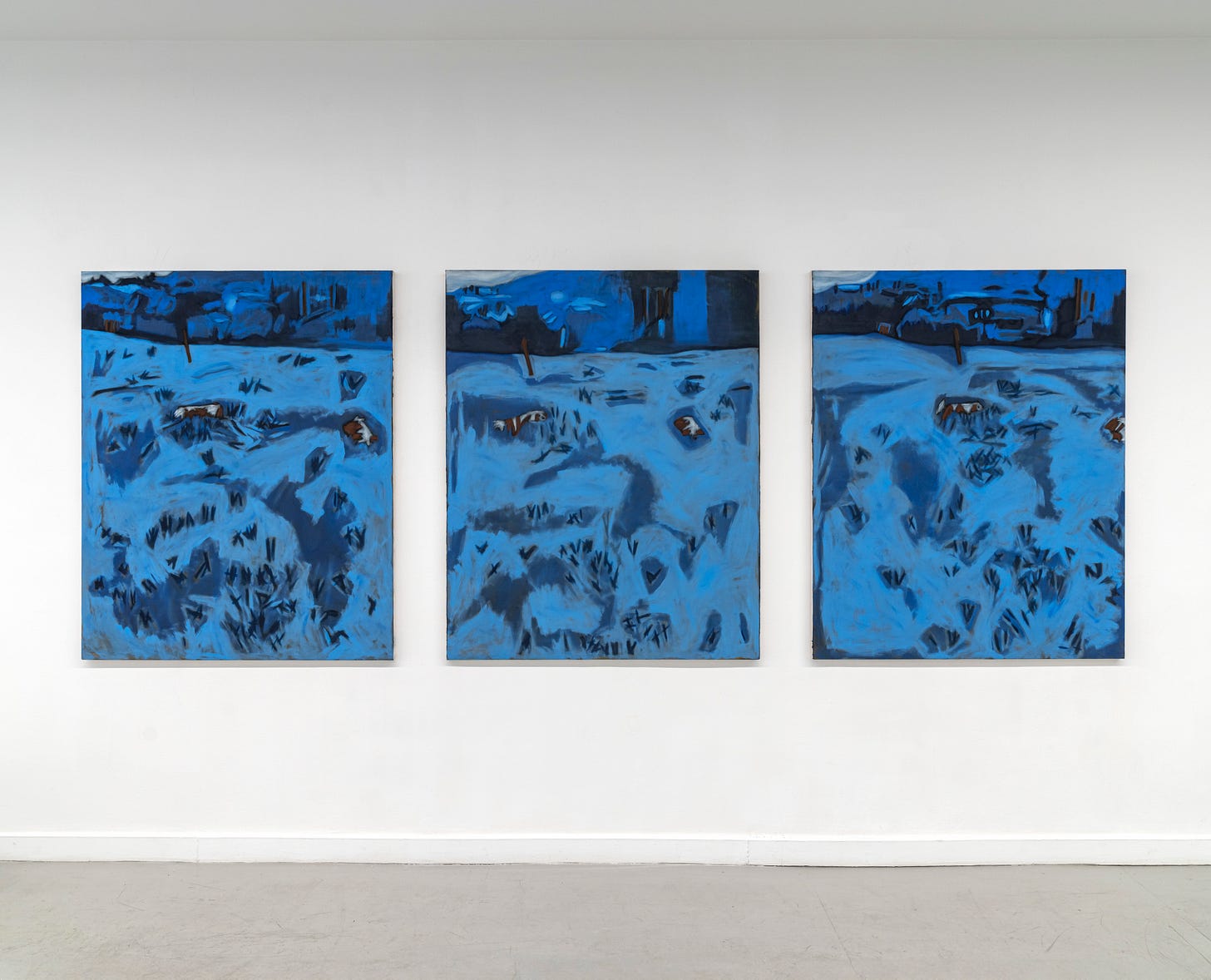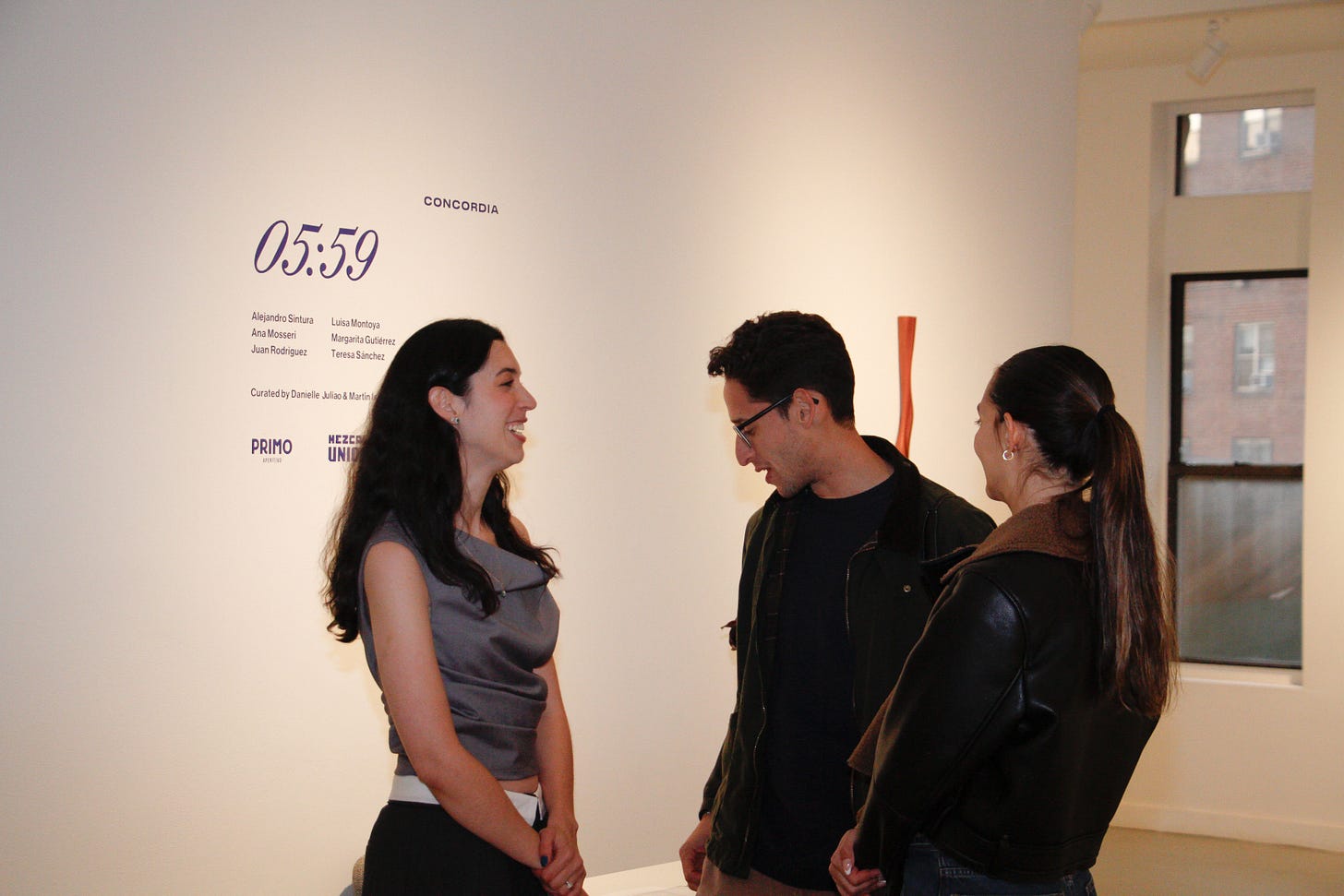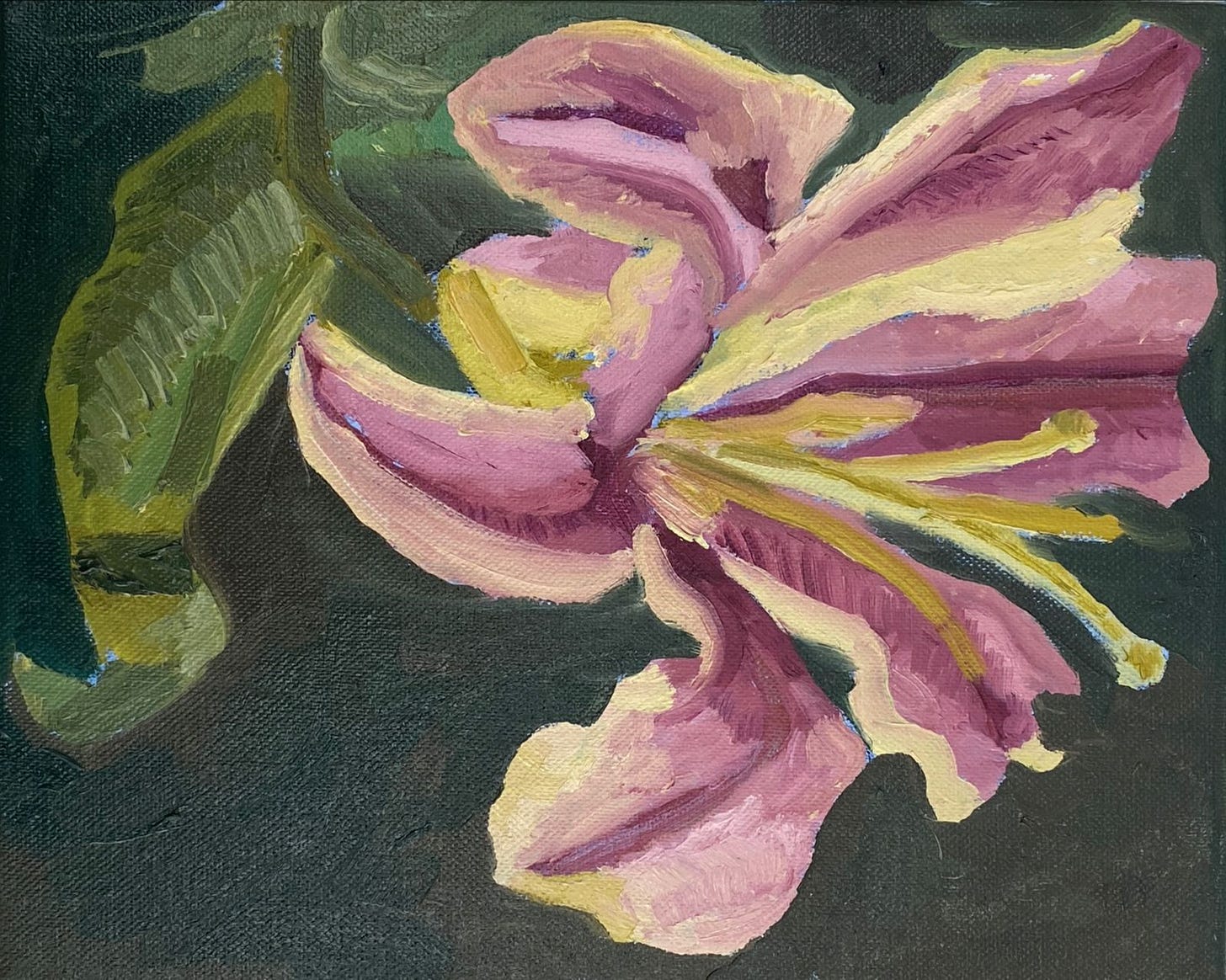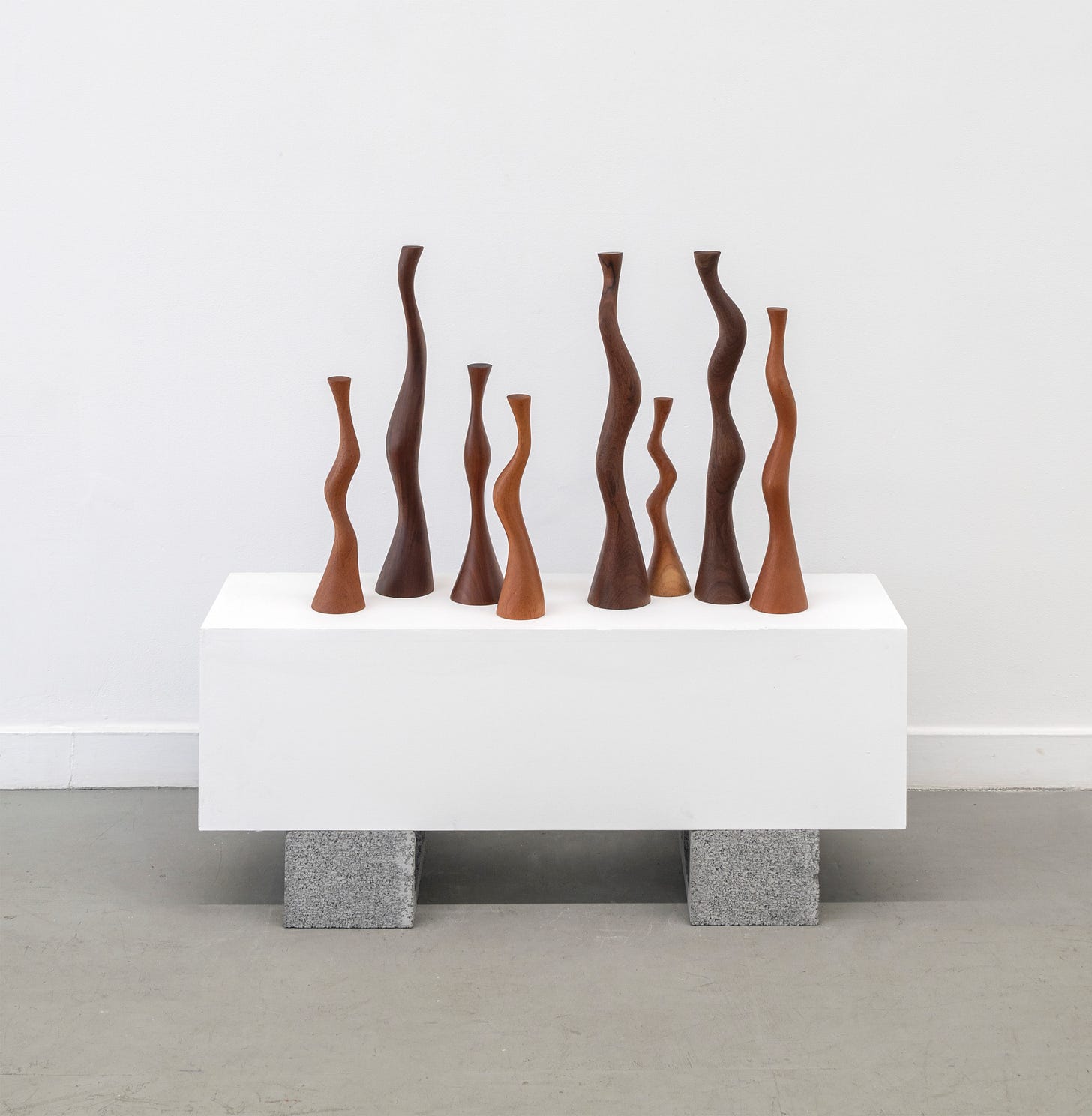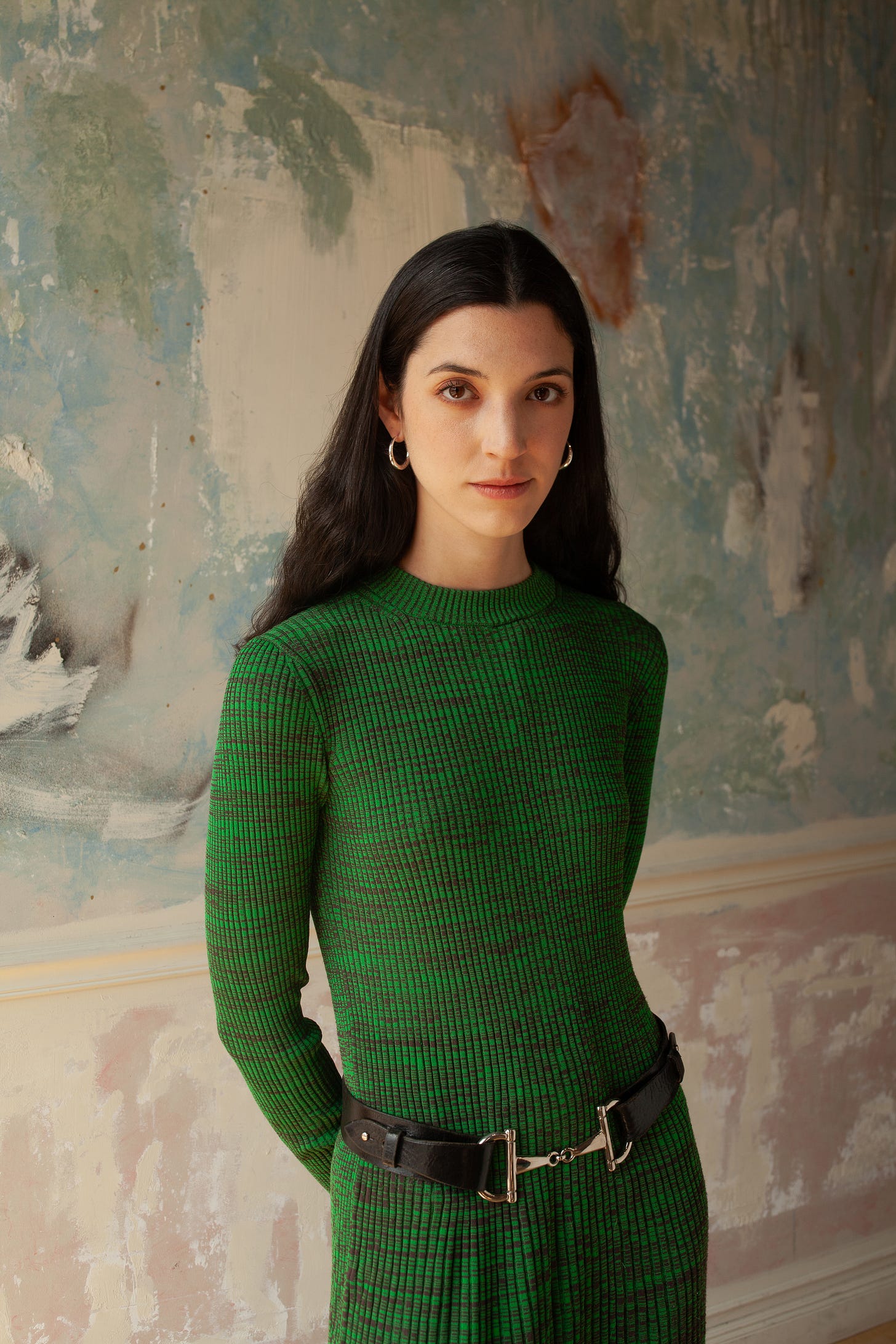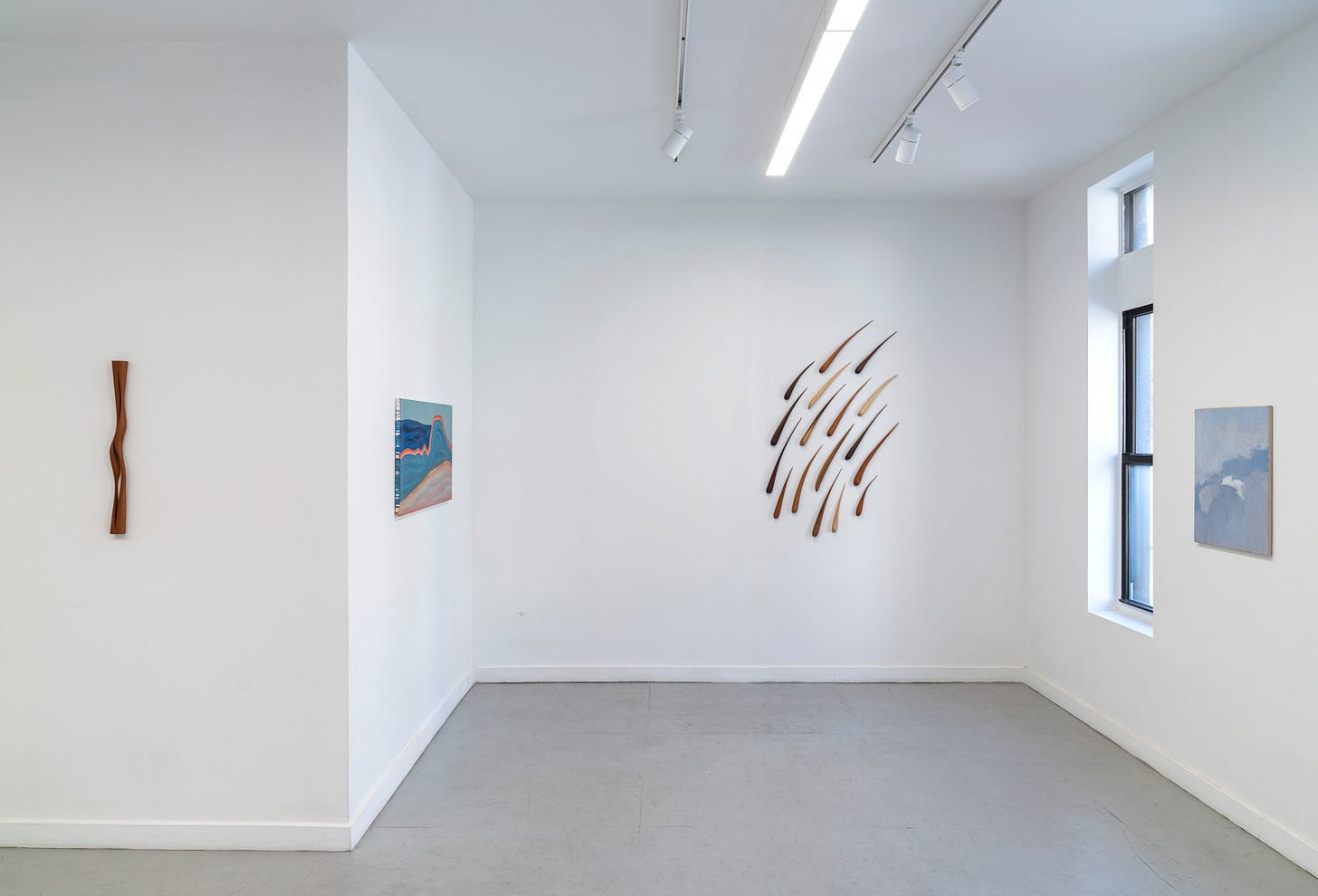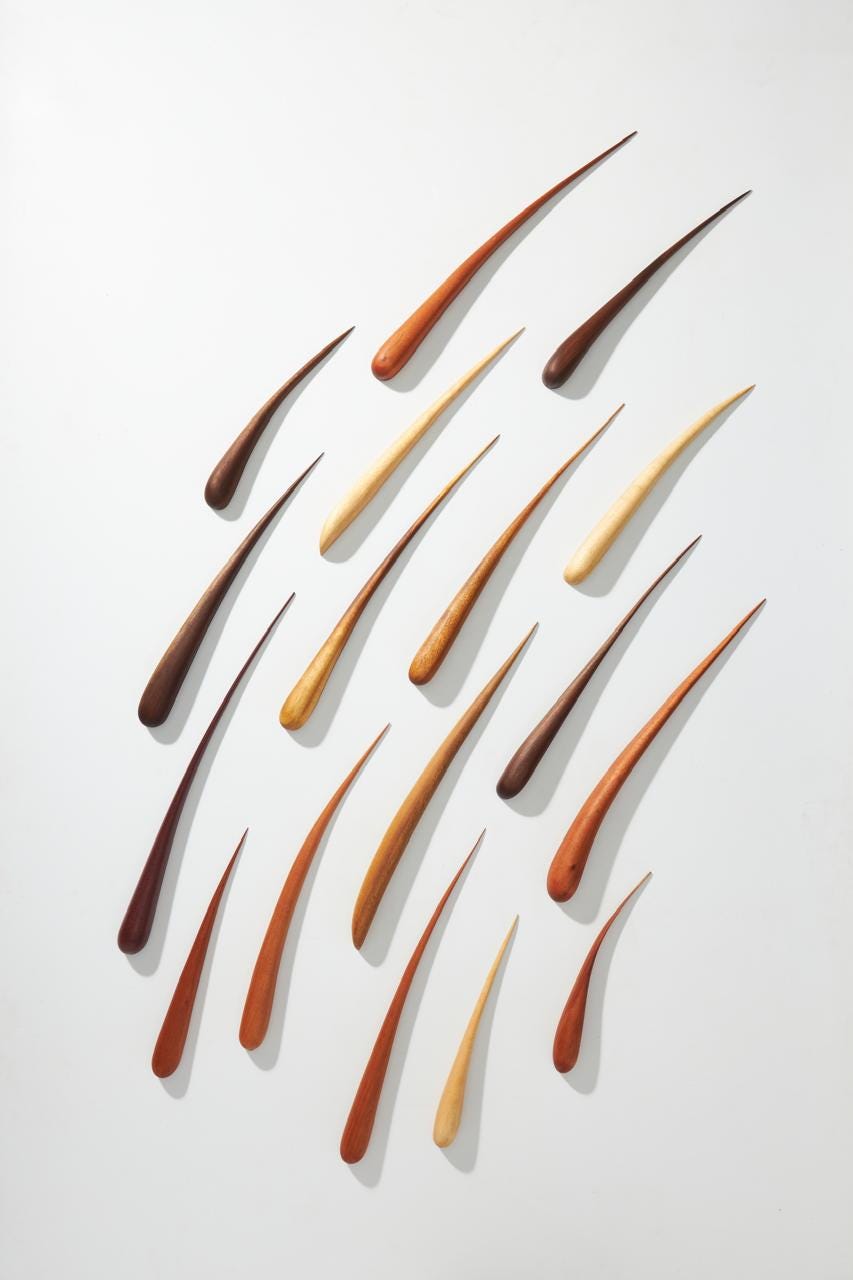In Conversation with: Danielle Juliao
En conversación con: Danielle Juliao (versión en español abajo)
Danielle Juliao is the visionary founder of Concordia Studio, a contemporary pop-up gallery based in New York City, dedicated to highlighting the work of emerging and mid-career Latin American artists.
In this interview, Danielle introduces us to Concordia and discusses her innovative approach to blending different disciplines with art in her exhibitions. She also reflects on the current dynamics of Latin American artist representation in the city and the specific challenges she faces while managing a nomadic gallery.
Q: What led you to start Concordia and where did your inspiration for the project come from?
Danielle Juliao: Concordia started last year, driven by the desire to change the course of my career development. I was working freelance, developing communication strategies for various brands in fashion, design and art. I was doing quite well, and it occurred to me to open an agency where I could expand my services and clients. However, at that moment I started to reevaluate what I really wanted to do professionally.
I realized that my interest was tied to the subject of emerging and mid-career contemporary art in Latin America. Living in New York, I could see that the Latin American art market was not very well explored yet. There are many Latin American artists living in the city and a few galleries that are dedicated to promoting their work; however, the market still has a lot of ground to cover.
I started working at Concordia in April, we had our first exhibition in September, and since then we haven't stopped.
Q: What do you think makes Concordia special?
Danielle Juliao: For me, it's fundamental that people feel good in the space, and that's something I pay a lot of attention to. I think we've managed to form a place where everyone feels comfortable, wants to stay longer and wants to come back.
In terms of programming, I think contemporary art proposals in New York have become extremely conceptual. We offer something a little different, focusing on a balance between the aesthetic and the conceptual. At Concordia, we are motivated to showcase artists with great technique whose work may not receive enough visibility because they don't explore trendy themes.
“At Concordia, we are motivated to showcase artists with great technique whose work may not receive enough visibility because they don't explore trendy themes”
Q: How would you describe the Concordia community?
Danielle Juliao: Curious, sensitive and with a good vibe.
Our community is made up of people who are curious and interested in art, even if they don't engage with it on a daily basis. They like to have a sense of community and analyze things from different points of view.
The visitors and collectors we receive are of a very varied age range. Many people show interest in our project and start attending art events as early as in their 20s. Many people come to an exhibition and end up collecting a work because it evokes something for them or they associate it with a particular experience, so it is essential for us to foster a sense of community with them.
Q: How do you see the current representation of Latin American artists in New York?
Danielle Juliao: It's not that common. It makes sense, as it is complicated for an American gallerist to decide to venture out and travel to Colombia in search of Latin artists. It involves a lot of costs and, if you don't have a direct connection to the region, you need to do a lot of research.
Most Latin American artists exhibited in the U.S. are those who reside here, as the logistics are more accessible. In New York, you see a lot of Mexican and Chicano art, partly because of the proximity, which is incredible. However, there is a huge opportunity and potential to connect with Latino artists. Many Latin American countries have local galleries that are doing extraordinary work.
“…there is a huge opportunity and potential to connect with Latino artists”
Q: What is the most rewarding aspect of your work?
Danielle Juliao: My favorite part is the curation. Once we have talked to all the artists and understood the theme of the exhibition, the process of designing the space feels amazing. On opening day, seeing how your idea has come to life is always very rewarding.
Organizing our exhibitions is a huge job, but seeing regular people come back to our events, several times bringing in new people, makes us feel like it's all worth it. Knowing that we have a community interested in what we do gives us “fuel” to keep doing it.
Q: Can you tell us about your most recent experience with the “05:59” exhibition at NADA?
Danielle Juliao: “05:59” is an exhibition co-curated with Martín Isaza, co-director of a gallery in Bogotá and a friend I met in college. Having studied a creative major, I am fortunate to know many people like him in the industry.
Martín and I hadn't spoken in many years, but we reconnected in February because I wanted to work with painter Ana Mosseri and I saw that he was already collaborating with her, so I wrote to him. Everything lined up for us to work together; he had come to New York for some art fairs and we also coincided in some fairs in Mexico. We soon realized that we shared an aesthetic and a concept about contemporary art, which facilitated the collaboration.
Martin took care of a lot of the logistics, since he lives in Bogota. He was in charge of going to see the studios of most of the artists we were working with. In July, I had the opportunity to visit him in Bogotá. We took advantage of the trip and he introduced me to the work of Luisa Montoya and Margarita Gutiérrez, who participated in this exhibition. The idea of “05:59” was not intended to be an exhibition of Colombian artists. The main theme was landscape painting interpreted from different levels of abstraction and the perception of the passage of time in the landscape: Works that would show how light influences our perception. In the end, we realized that this exhibition reflected a micro movement that is occurring in Bogota through several generations: a renewed interest in landscape.
To show the exhibition, we thought that an interesting ally would be NADA, since they have a spectacular space in the Lower East Side. Everything worked out very well and we had the exhibition showing there.
“In the end, we realized that this exhibition reflected a micro movement that is occurring in Bogota through several generations: a renewed interest in landscape”
Q: What moment has made you most proud with Concordia?
Danielle Juliao: I think all the projects we've done have great moments, but the most recent one, “05:59”, is the one I'm most proud of.
“05:59” perfectly shows the evolution of Concordia. This was the first time we took the plunge to show large format works, something we didn't do in past exhibitions, for fear of logistics. But what I am most proud of is that the artists were as satisfied with the project as we were.
Q: What challenges have you faced in running a nomadic gallery, especially in the context of supporting emerging artists?
Danielle Juliao: Having a nomadic gallery presents both advantages and disadvantages. By not having a fixed space, there is limited time to exhibit the works, so it is crucial to take advantage of every available moment to be able to sell them. This implies being active in social networks, having a well-structured website and sending emails and newsletters to our community. This dynamic is very different from operating in a permanent space, but, for the moment, being a nomadic gallery is the right strategy.
Working with emerging artists in a city like New York is very energizing, as there is so much to discover, but it also means there is a huge supply, which can be intimidating for galleries. Recently, an artist said something to me that I loved, “Every work has its suitor.” It's true. There will always be a place for what you're showing; the challenge lies in getting the right people to find you and for you to find them. It's a slow process, but collectors tend to be consistent people. If they believe in your work and connect with the artists you represent, they will be part of your community for a long time.
I've also learned that it's essential to have a diverse program that offers space to artists who, although new to New York at first, we believe have great potential. My work as a gallerist is quite demanding; if you want to do it, you can do it, but I understand why other people don't want to get into this mess. I think what helps me is that recursive attitude that comes from being Latina; it's something that is in my blood.
“There will always room for what you're showing; the challenge lies in getting the right people to find you and for you to find them”
Q: Concordia's events combine different disciplines, such as gastronomy, writing and fashion, with art. What inspired you to incorporate these elements into a gallery space?
Danielle Juliao: I think it's a combination of several factors. I've always liked to bring different disciplines together in the same space. Also, it's a growth strategy, because to start a gallery you need to build a database, and this is a way for people to get to know you and you to get to know more people. I think it's a super organic and fun way to attract a constant flow of visitors, not just because they are interested in the art.
I like to create experiences within the exhibitions so that we can open up the space to people who are not usually part of the art world in a conventional way. I want this group of people to attend our exhibitions, become familiar with the subject matter and feel it more “attainable,” so to speak. Some people see art spaces as distant, as galleries and museums often convey that impression. At Concordia, we want to open our space to welcome them.
Recently, we organized an “art writing workshop” with a writer who does extraordinary publications. She brought a guide with several questions, focused on the emotional aspect rather than being academic, such as: What is the first thing you feel when you see this painting? The people who participated really connected with their memories and emotions, which made the atmosphere feel super special.
“Some people see art spaces as distant, as galleries and museums often convey that impression. At Concordia, we want to open our space to welcome them”
Q: How do you choose the people and projects you will collaborate with for these types of events?
Danielle Juliao: It has a lot to do with my connection with them; it's more intuitive than strategic. Of course, they have to align with our concept. Generally, they are initiatives that I know and have observed operating, although I don't necessarily have to have a personal relationship with them.
Q: What are your future plans with Concordia?
Danielle Juliao: Maybe to have an exhibition in Colombia, to continue working with the same artists we have now, to grow with them and help them grow as well. If there are artists from other parts of the world that align with our project, they are welcome, but we always want to work mainly with Latin American artists.
I would also like to make a strong push in the institutional arena. At the moment, we have focused a lot on the commercial aspect, as we are just starting the project. However, I am excited about the idea of starting to intervene in public spaces and collaborate with museums or NGOs.
Concordia has been evolving organically, focusing more on exhibitions and events. Right now, we are a nomadic project, but eventually we would like to adopt a permanent location, while still intervening in less conventional spaces for some projects that require it. I'm still not sure where and how, but I definitely envision it in the future. Starting to participate in art fairs next year is also in our plans.
“Right now, we are a nomadic project, but eventually we would like to adopt a permanent location, while still intervening in less conventional spaces for some projects that require it”
Q: What advice would you give to an emerging artist looking to gain greater recognition?
Danielle Juliao: Before seeking greater recognition, it is essential that they produce a significant amount of work. They must question what it is that they are bringing to the scene, because if they don't have clarity on that, it will be very complicated for them to find their place in this very saturated industry.
It is a job that requires a lot of patience. Sometimes we wish that an opportunity would come along, but in reality, it is preferable that it comes when we are truly prepared to give the best of ourselves. Another recommendation would be to seek the support of more experienced artists in the industry, attend art fairs, connect with gallery owners and begin to familiarize yourself with the programs of each gallery. This research will help you determine which space you want to be in.
To learn more about Danielle Juliao and Concordia, visit:
Danielle Juliao es la visionaria fundadora de Concordia Studio, una galería pop-up de arte contemporáneo establecida en Nueva York, dedicada a destacar la obra de artistas latinoamericanos emergentes y a mitad de carrera.
En esta entrevista, Danielle nos introduce a Concordia y nos habla de su enfoque innovador para mezclar diferentes disciplinas con el arte en sus exhibiciones. También reflexiona sobre la dinámica actual de la representación de artistas latinoamericanos en la ciudad y los retos específicos a los que se enfrenta al gestionar una galería nómada.
Q: ¿Qué te llevó a iniciar Concordia y de dónde vino tu inspiración para el proyecto?
Danielle Juliao: Concordia comenzó el año pasado, impulsada por el deseo de cambiar el rumbo en el desarrollo de mi carrera. Trabajaba de manera independiente, desarrollando estrategias de comunicación para diversas marcas en el ámbito de la moda, el diseño y el arte. Me estaba yendo bastante bien y se me ocurrió abrir una agencia donde podía ampliar mis servicios y clientes. Sin embargo, en ese momento empecé a reevaluar lo que realmente quería hacer profesionalmente.
Me di cuenta de que mi interés estaba atado al tema del arte contemporáneo emergente y de mediana carrera en Latinoamérica. Al estar viviendo en Nueva York, pude observar que el mercado de arte latinoamericano no estaba muy explorado aún. Hay muchos artistas latinoamericanos viviendo en la ciudad y unas cuantas galerías que se dedican a difundir su trabajo; sin embargo, el mercado aún tiene mucho espacio por cubrir.
Empecé a trabajar en Concordia en abril, tuvimos nuestra primera exposición en septiembre, y desde ahí no hemos parado.
Q: ¿Qué consideras que hace especial a Concordia?
Danielle Juliao: Para mí, es fundamental que las personas se sientan bien en el espacio, y eso es algo a lo que le presto mucha atención. Creo que hemos logrado formar un lugar donde todos se sienten cómodos, quieren quedarse más tiempo y desean regresar.
En cuanto a la programación, creo que las propuestas de arte contemporáneo en Nueva York se han vuelto extremadamente conceptuales. Nosotros ofrecemos algo un poco distinto, enfocándonos en un equilibrio entre lo estético y lo conceptual. En Concordia, nos motiva exhibir a artistas con gran técnica cuyo trabajo quizás no recibe suficiente visibilidad porque no exploran temas que están de moda.
“En Concordia, nos motiva exhibir a artistas con gran técnica cuyo trabajo quizás no recibe suficiente visibilidad porque no exploran temas que están de moda”
Q: ¿Cómo describirías a la comunidad de Concordia?
Danielle Juliao: Curiosa, sensible y con buena vibra.
Nuestra comunidad está compuesta por personas curiosas e interesadas en el arte, aunque no se dediquen a ello a diario. Les gusta tener un sentido de comunidad y analizar las cosas desde diferentes puntos de vista.
Los visitantes y coleccionistas que recibimos son de un rango de edad muy variado. Muchas personas muestran interés en nuestro proyecto y comienzan a asistir a eventos de arte desde que tienen 20 años. Muchas personas llegan a una exposición y terminan coleccionando una obra porque les evoca algo o la asocian con una experiencia particular, por lo que es fundamental para nosotros fomentar un sentido de comunidad con ellos.
Q: ¿Cómo ves la actual representación de artistas latinoamericanos en Nueva York?
Danielle Juliao: No es algo tan habitual. Tiene sentido, ya que es complicado que un galerista americano decida aventurarse y viajar a Colombia en busca de artistas latinos. Esto implica muchos costos y, si no tienes una conexión directa con la región, se necesita realizar una investigación a fondo.
La mayoría de los artistas latinoamericanos exhibidos en EE. UU. son aquellos que residen aquí, ya que la logística es más accesible. En Nueva York, se observa una gran cantidad de arte mexicano y chicano, en parte por la cercanía, lo cual es increíble. Sin embargo, existe una enorme oportunidad y potencial para conectar con artistas latinos. Muchos países de Latinoamérica cuentan con galerías locales que están realizando un trabajo extraordinario.
“…existe una enorme oportunidad y potencial para conectar con artistas latinos”
Q: ¿Cuál es el aspecto más gratificante de tu trabajo?
Danielle Juliao: Mi parte favorita es la curaduría. Una vez que hemos conversado con todos los artistas y entendido la temática de la exposición, el proceso de diseñar el espacio se siente increíble. En el día de la apertura, ver cómo tu idea se ha hecho realidad es siempre muy gratificante.
Organizar nuestras exhibiciones es un trabajo enorme, pero ver que la gente habitual regresa a nuestros eventos, varias veces trayendo a personas nuevas, nos hace sentir que todo vale la pena. Saber que contamos con una comunidad interesada en lo que hacemos nos da “gasolina” para seguir haciéndolo.
Q: ¿Puedes contarnos sobre tu experiencia más reciente con la exposición “05:59” en NADA?
Danielle Juliao: “05:59” es una exhibición co-curada con Martín Isaza, codirector de una galería en Bogotá y amigo que conocí en la universidad. Al haber estudiado una carrera creativa, tengo la suerte de conocer a muchas personas como él en la industria.
Martín y yo no habíamos hablado en muchos años, pero reconectamos en febrero porque quería trabajar con la pintora Ana Mosseri y vi que él ya colaboraba con ella, así que le escribí. Todo se alineó para que trabajáramos juntos; él había venido a Nueva York para algunas ferias de arte y también coincidimos en unas ferias en México. Pronto nos dimos cuenta de que compartíamos una estética y un concepto sobre el arte contemporáneo, lo que facilitó la colaboración.
Martín se encargó mucho del tema de la logística, ya que él vive en Bogotá. Él se encargó de ir a ver los estudios de la mayoría de los artistas con los que estábamos trabajando. En julio, tuve la oportunidad de visitarlo en Bogotá. Aprovechamos el viaje y me presentó el trabajo de Luisa Montoya y Margarita Gutiérrez, quienes participaron en esta exhibición. La idea de “05:59” no surgió con la intención de ser una muestra de artistas colombianos. El tema principal era el paisajismo interpretado desde distintos niveles de abstracción y la percepción del paso del tiempo en el paisaje: obras que mostraran cómo la luz influye en nuestra percepción. Al final, nos dimos cuenta de que esta exhibición reflejaba un micro movimiento que está ocurriendo en Bogotá a través de varias generaciones: un interés renovado por el paisaje.
Para mostrar la exhibición, pensamos que un aliado interesante sería NADA, ya que tienen un espacio espectacular en el Lower East Side. Todo funcionó muy bien y tuvimos la exhibición mostrándose ahí
“Al final, nos dimos cuenta de que esta exhibición reflejaba un micro movimiento que está ocurriendo en Bogotá a través de varias generaciones: un interés renovado por el paisaje”
Q: ¿Qué momento te ha hecho sentir más orgullosa con Concordia?
Danielle Juliao: Creo que todos los proyectos que hemos realizado tienen grandes momentos, pero el más reciente, "05:59", es el que más me enorgullece.
“05:59” muestra perfectamente la evolución de Concordia. Esta fue la primera vez que nos lanzamos a mostrar obras de gran formato, algo que no hicimos en exhibiciones pasadas, por temor a la logística. Pero lo que más me enorgullece es que los artistas hayan quedado tan satisfechos con el proyecto como nosotros.
Q: ¿Qué desafíos has enfrentado al dirigir una galería nómada, especialmente en el contexto de apoyar a artistas emergentes?
Danielle Juliao: Tener una galería nómada presenta tanto ventajas como desventajas. Al no tener un espacio fijo, hay un tiempo limitado para exhibir las obras, por lo que es crucial aprovechar cada momento disponible para poder venderlas. Esto implica estar activos en redes sociales, tener una página web bien estructurada y enviar correos y boletines a nuestra comunidad. Esta dinámica es muy distinta a la de operar en un espacio permanente, pero, por el momento, ser una galería nómada es la estrategia adecuada.
Trabajar con artistas emergentes en una ciudad como Nueva York es muy energético, ya que hay mucho por descubrir, pero también significa que hay una gran oferta, lo cual puede resultar intimidante para las galerías. Recientemente, un artista me dijo algo que me encantó: “Cada obra tiene su pretendiente”. Es cierto. Siempre habrá un lugar para lo que estás mostrando; el desafío radica en que las personas adecuadas te encuentren y que tú las encuentres a ellas. Es un proceso lento, pero los coleccionistas suelen ser personas constantes. Si creen en tu trabajo y se conectan con los artistas que representas, formarán parte de tu comunidad por mucho tiempo.
También he aprendido que es esencial tener un programa diverso que ofrezca espacio a artistas que, aunque al principio sean nuevos en Nueva York, nosotros creemos que tienen un gran potencial. Mi trabajo como galerista es bastante demandante; si lo quieres hacer, lo puedes hacer, pero entiendo por qué otras personas no se quieren meter en este lío. Yo creo que lo que me ayuda es esa actitud recursiva que una tiene por ser latina; es algo que viene de sangre.
“Siempre habrá un lugar para lo que estás mostrando; el desafío radica en que las personas adecuadas te encuentren y te encuentren y que tú las encuentres a ellas.”
Q: Los eventos de Concordia combinan distintas disciplinas, como la gastronomía, la escritura y la moda, con el arte. ¿Qué te inspiró a incorporar estos elementos en un espacio de galería?
Danielle Juliao: Creo que se trata de una combinación de varios factores. Siempre me ha gustado unir diferentes disciplinas en un mismo espacio. Además, es una estrategia de crecimiento, ya que para iniciar una galería necesitas construir una base de datos, y esta es una forma de que la gente te conozca y tú a más personas. Creo que es una manera súper orgánica y divertida de atraer un flujo constante de visitantes, no solo porque estén interesados en el arte.
Me gusta crear experiencias dentro de las exposiciones para que podamos abrir el espacio a personas que, por lo general, no forman parte del mundo del arte de manera convencional. Quiero que este grupo de personas asista a nuestras exhibiciones, se familiarice con el tema y lo sienta más "alcanzable", por así decirlo. Algunas personas ven los espacios artísticos como distantes, ya que las galerías y museos a menudo transmiten esa impresión. En Concordia, queremos abrir nuestro espacio para darles la bienvenida.
Recientemente, organizamos un "taller de escritura sobre arte" con una escritora que realiza publicaciones extraordinarias. Ella llevó una guía con varias preguntas, enfocadas en el aspecto emocional en lugar de ser académicas, como: ¿Qué es lo primero que sientes al ver esta pintura? Las personas que participaron se conectaron mucho con sus recuerdos y emociones, lo cual hizo que el ambiente se sintiera súper especial.
“Algunas personas ven los espacios artísticos como distantes, ya que las galerías y museos a menudo transmiten esa impresión. En Concordia, queremos abrir nuestro espacio para darles la bienvenida”
Q: ¿Cómo escoges a las personas y proyectos con los que vas a colaborar para este tipo de eventos?
Danielle Juliao: Tiene mucho que ver con mi conexión con ellos; es más intuitivo que estratégico. Por supuesto, deben alinearse con nuestro concepto. Generalmente, son iniciativas que conozco y he observado en funcionamiento, aunque no necesariamente debo tener una relación personal con ellas.
Q: ¿Cuáles son tus planes a futuro con Concordia?
Danielle Juliao: Quizás realizar una exposición en Colombia, seguir trabajando con los mismos artistas que tenemos ahora, crecer con ellos y ayudarlos a crecer también. Si hay artistas de otras partes del mundo que se alinean con nuestro proyecto, son bienvenidos, pero siempre queremos trabajar principalmente con artistas latinoamericanos.
Me gustaría también hacer un fuerte impulso en el ámbito institucional. En este momento, nos hemos centrado mucho en el aspecto comercial, ya que recién estamos iniciando el proyecto. Sin embargo, me entusiasma la idea de comenzar a intervenir espacios públicos y colaborar con museos o ONGs.
Concordia ha estado evolucionando de forma orgánica, enfocándose más en exhibiciones y eventos. Ahora mismo, somos un proyecto nómada, pero eventualmente nos gustaría adoptar un lugar permanente, sin dejar de intervenir en espacios menos convencionales para algunos proyectos que lo requieran. Aún no tengo claro dónde ni cómo, pero definitivamente lo visualizo en el futuro. Empezar a participar en ferias de arte el próximo año también está en nuestros planes.
“Ahora mismo, somos un proyecto nómada, pero eventualmente nos gustaría adoptar un lugar permanente, sin dejar de intervenir en espacios menos convencionales para algunos proyectos que lo requieran”
Q: ¿Qué consejo le darías a un artista emergente que busca obtener mayor reconocimiento?
Danielle Juliao: Antes de buscar un mayor reconocimiento, es fundamental que produzcan una cantidad significativa de obras. Deben cuestionarse qué es lo que están aportando al panorama, porque si no tienen claridad en eso, será muy complicado que encuentren su lugar en esta industria tan saturada.
Es un trabajo que requiere mucha paciencia. A veces deseamos que una oportunidad llegue, pero en realidad es preferible que se presente cuando estamos verdaderamente preparados para dar lo mejor de nosotros. Otra recomendación sería que busquen el apoyo de artistas con más experiencia en la industria, asistan a ferias de arte, se conecten con galeristas y comiencen a familiarizarse con los programas de cada galería. Esta investigación les ayudará a determinar en qué espacio quieren estar.
Para saber más sobre Danielle Juliao y Concordia, visita:







